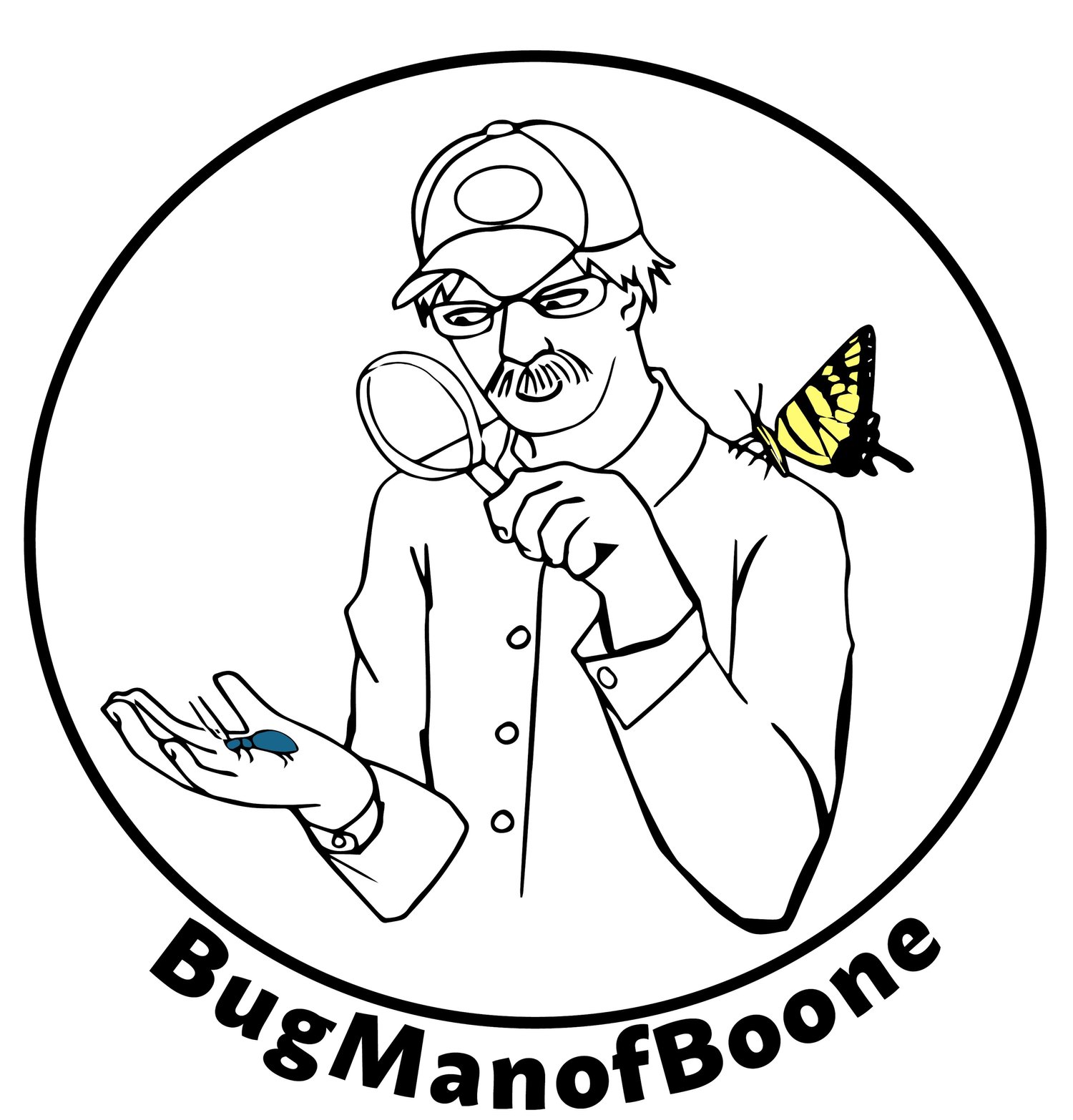The eastern tent caterpillar- A tree house bug
Many insect species are known for their abilities as engineers, such as building nests. When wild cherry trees in the High Country of western North Carolina put out their leaves in spring, looking carefully you may see small, silky gray "tents" in the crotch of branches. This is the nest of the eastern tent caterpillar, Malacosoma americanum. Though nests are generally found on wild cherry, other trees like crab apple and apple may have nests. I described in a previous article another nest-building insect in trees, the fall webworm, which appears primarily in late summer or autumn as their name implies. Unlike that insect, the tent caterpillar is found only in the spring, feeds on different trees, and uses the nest it builds much differently than the fall webworm. Exploring the life history of the eastern tent caterpillar provides another fascinating example of an insect engineer.
Nest forming with young caterpillars
Photo by Ray S Williams
Malacosoma americanum is a good example of an insect that has only one generation per year (referred to as univoltine), so you won’t find this moth or their caterpillars after early summer. Caterpillars hatch from eggs that were laid the previous summer by the female moth, and the small caterpillars immediately begin to build a tent-like nest in the crotch of branches. As the bugs grow, the nest gets larger and larger since each nest is the home for a hundred or more individuals. Different from the fall webworm, the nest for the tent caterpillar is confined to tree branches and does not cover leaves. For the first few weeks after hatching, the hungry tent caterpillars leave the nest during the day to feed on the most tender young cherry leaves, then return to the nest at night. Interestingly, caterpillars are known to leave a smelly scent trail for their siblings so that they can find the highest quality leaves! As the caterpillars get larger and require more food, they begin feeding at night and stay in the nest during the day. This change in feeding behavior happens for a couple of reasons. First, by leaving the nest at night to feed, the large and now more conspicuous caterpillars can better avoid birds and other predators that rely on vision to locate food. Secondly, staying inside the nest during the day also allows the caterpillars to better avoid parasitic insects that use them as a host.
Late instar caterpillars
Photo credit: Robert L. Anderson, USDA Forest Service, Bugwood.org
After feeding is completed, the tent caterpillar has reached a size of one to two inches, with a white stripe down the middle and blue dots along each side. It’s now time to leave the tree house nest for the ground to find a place to produce the next life stage, the pupa. The large caterpillars can be seen wandering across roads or crawling on structures before settling down. A few weeks after the pupa is formed, a small brown moth with two white stripes on the wing emerges. Adult moths live only a short time, and if you want to see them you must look at night because adults are generally not active during the day. After mating with a male moth, the female lays a mass of black eggs on the branches of a cherry tree. Looking closely you can see a “shine” to the egg mass since the female covers it with protective materials. The eggs lay dormant until the next year when the cycle begins anew.
Photo credit: Lacy L. Hyche, Auburn University, Bugwood.org
From our perspective we may see two possible sides to the tent caterpillar story. Though to some people the nests appear unsightly, and you have concerns that the caterpillars hurt trees, this insect doesn’t really cause substantial damage to most trees since they have many more leaves than the caterpillars can eat. An exception would be if several tent caterpillar nests were built in a very small tree, when all its leaves could be eaten. On a positive note, insects that congregate in one place provide an important food source for migratory birds, who would go hungry without their tasty meals of tent caterpillars. So in the balance of nature, this bug plays a beneficial role.
The appearance of eastern tent caterpillar nests in cherry trees as leaves are coming out is a sure sign of spring for us in the High Country. Their tent-like home, and its role in the insect’s life cycle, provides another example of how industrious bugs in our area can be.
References:
S Frank and J Baker. Eastern Tent Caterpillar. NC State Extension Publication. 2023.
https://content.ces.ncsu.edu/eastern-tent-caterpillar
R Bessin. Eastern Tent Caterpillar. Department of Entomology, University of Kentucky. 2019.
https://entomology.ca.uky.edu/ef423
WT Johnson and HH Lyon (eds). Insects that feed on trees and shrubs. 1991. Comstock Publishing Associates, Ithaca, NY.
TD Fitgerald, T Casey and B. Joos. Daily foraging schedule of field colonies of the eastern tent caterpillar, Malacosoma americanum. 1988. Oecologia, Vol. 76: 574-578
Portions of this article appeared in the Watauga Democrat (Boone, NC) on May 30, 2023.



